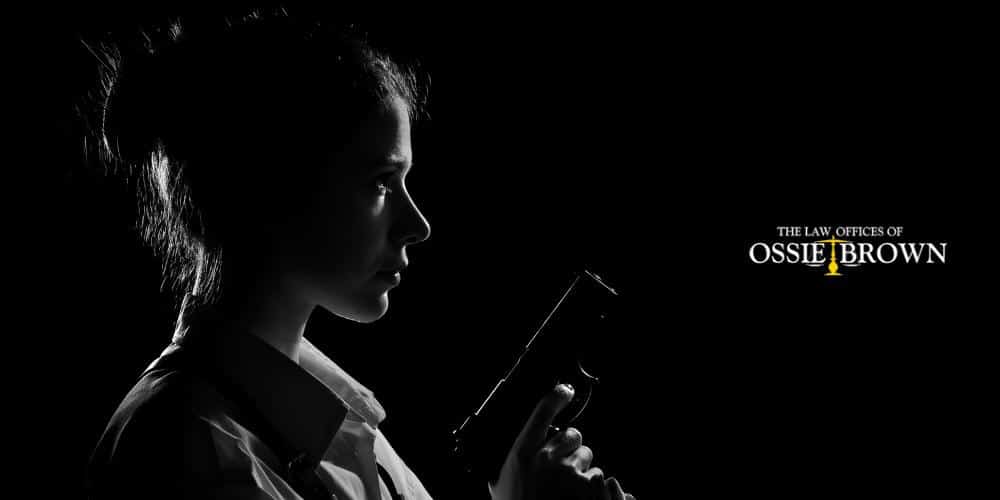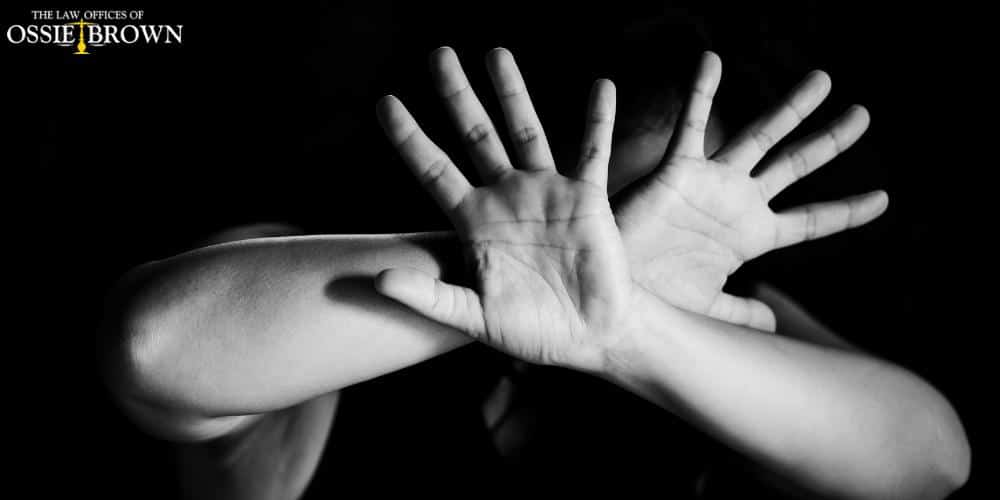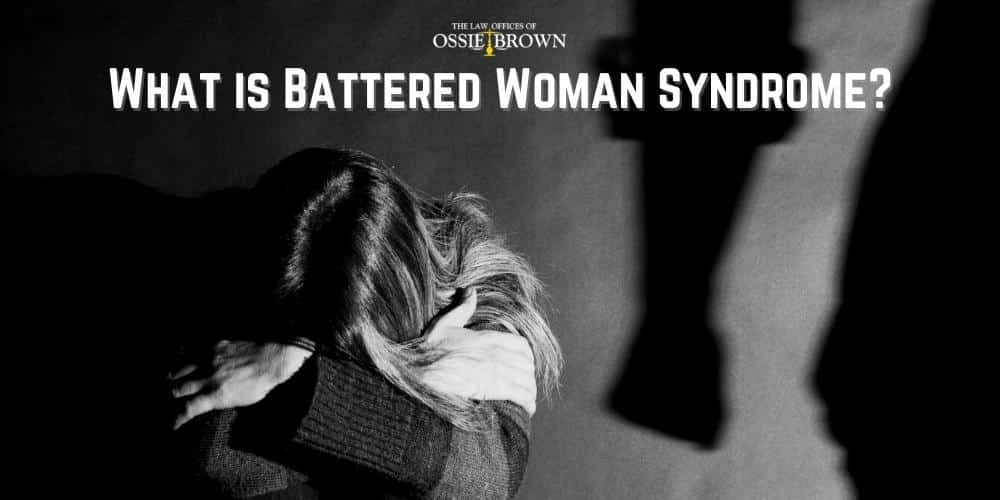Tragically, domestic violence is a daily occurrence in the United States. In most cases, domestic abuse occurs when male partners inflict violence against women. However, men can definitely be victims of intimate partner violence as well. Psychologist Lenore Walker began studying the mental, behavioral, and physical effects of an abusive relationship in the 1970s and coined a pattern of symptoms called battered woman syndrome (BWS) which is considered a subcategory of PTSD.
Since the 1970s, battered woman syndrome has become a common legal defense in criminal cases where battered women severely injure or kill their abusive partners out of self-defense. Below, our Baton Rouge violent crime lawyers break down the details of battered woman syndrome, how it may be used as a successful legal defense, and why legal experts often question the use of this defense.
If you are facing violent crime charges after enduring long-term domestic abuse, the Baton Rouge criminal defense lawyers at the Law Offices of Ossie Brown want to defend your legal rights. We can listen to your story, review the details in your case, and help you obtain the best case outcome possible. Call 225-343-1111 to schedule a free consultation at our law firm today.
What is Battered Woman Syndrome?
Battered woman syndrome (BWS) is a direct product of long-term intimate partner violence and is considered a subcategory of post-traumatic stress disorder (PTSD). This pattern of symptoms is mostly displayed by women in abusive relationships. However, men can be victims of intimate partner abuse, too. So, the International Classification of Diseases (ICD 9) refers to the pattern of symptoms as “battered person syndrome.”
Abuse victims can show signs of battered woman syndrome after several months or years of:
- Physical abuse
- Emotional abuse
- Sexual abuse
- Verbal sexual harassment
- Financial abuse
- Psychological abuse
- Constant threats of physical violence towards the partner and/or their child(ren)
Why Abused Women Don’t “Just Leave”
When many people hear about domestic abuse, they often ask, “Well, why don’t they just leave?” They may even place blame on the victim for not saving themselves sooner. Contrary to popular opinion, battered women often can’t “just leave” an abusive relationship. Here’s why.
Despite the ongoing domestic violence, most battered women stay in abusive relationships for many months or years. This is because domestic abuse comes and goes in a constant cycle: the tension slowly builds, the woman is physically abused, and finally, the abuser apologizes and promises to do better. Many experts refer to this last part of the cycle as the “honeymoon phase” because the abusive partner is calm, loving, and apologetic. Many women wait for the abuser’s promises of betterment to come true. But almost 100% of the time, this does not happen.
Battered women also tend to stay in abusive relationships because many of them have no money, resources, or support to escape. There may also be children involved, which further complicates the whole situation. The battered woman may not want to take the child away from their father – no matter how abusive they are – due to guilt.
In many cases, abusive partners have complete coercive control over the woman. They may isolate her from her friends and family members, they may prevent her from having access to her own money, they may even deprive her of transportation. Because of this, battered women are often trapped, even if they do want to leave the abusive relationship.
Stages of Battered Woman Syndrome
Every domestic violence case is different. Every single abuse victim is different as well. However, a battered spouse typically goes through the following four stages:
- Denial: The spouse doesn’t want to believe that they’re being abused, or they tell themselves that the abuse was just a “one-time thing.”
- Guilt: The spouse blames themself for the abuse. This is often the result of emotional and/or psychological abuse within the relationship. The abusive partner may tell them that they are violent because of something they have said or done. Therefore, the victim may believe that the abuse is their fault.
- Enlightenment: In this stage, the victim finally realizes that they do not deserve to be abused. Additionally, the victim may finally come to terms with the fact that their partner is, in fact, abusive.
- Responsibility: The victim realizes that their partner is the only one responsible for the abuse. Usually, during this stage, they will create a safety plan, seek support, regain control, and try to escape.
How Common is Battered Woman Syndrome?
According to the National Coalition Against Domestic Violence (NCADV), more than 10 million men and women suffer from domestic violence every year. 1 in 4 women and 1 in 9 men experience a wide range of intimate partner abuse, such as physical violence, sexual violence, stalking, etc. Most of these victims end up developing posttraumatic stress disorder and/or battered person syndrome.
Signs and Symptoms of Battered Woman Syndrome
Battered woman syndrome is generally not considered a mental illness in and of itself. Instead, it’s considered a pattern of symptoms that often coexists with PTSD symptoms. Common signs and symptoms of battered woman syndrome include:
- Intrusive memories and flashbacks of past traumatic events
- Severe anxiety and hypervigilance
- Panic attacks
- Severe depression
- Very low self-esteem and/or poor body image
- Avoidance and/or denial
- Dissociation (mentally detaching from the physical body as a coping mechanism)
- Learned helplessness
- Feeling like they have no control over themselves or their life
- Sexual dysfunction
- Short-term memory problems and confusion (possibly from a past brain injury as a result of beatings/strangulations)
- Very little financial resources
- Very few friends and family members compared to before they entered the abusive relationship
- Physical health problems as a result of chronic stress and physical violence (headaches, gastrointestinal problems, high blood pressure, musculoskeletal pain, etc.)

How Battered Woman Syndrome is Used as a Defense Against Criminal Charges
Over the last several decades, battered woman syndrome has been used as a legal defense in cases where the woman severely injures or kills her abusive partner for the sake of self-defense. Many battered women resort to injuring or killing their partners because they believe there is no other way out.
The Case of Francine Hughes
Battered woman syndrome was first used as a legal defense in 1977, when Francine Hughes killed her abusive partner, Mickey Hughes, after suffering from 13 years of domestic violence. Hughes killed her husband by setting his bed on fire while he was sleeping. Not only was Mickey killed, but the house burned down as well. During her trial, Hughes was found not guilty due to “temporary insanity.” Later, the term battered woman syndrome was coined, and legal experts determined that Hughes’ case was the first time it was used as a defense.
Provocation
Battered woman syndrome was used more commonly as a legal defense in the 1990s, after several women in England murdered their abusive spouses. All of the women admitted that the murders were the result of long-term abuse, not one single “provocative act.”
The definition of “provocation” became very important in cases where battered woman syndrome was being used as a defense. The main definition that England used in the 1990s was this:
“Provocation is some act, or series of acts done (or words spoken) … which would cause in any reasonable person and actually causes in the accused, a sudden and temporary loss of self-control, rendering the accused so subject to passion as to make him or her for the moment not master of his or her mind.”
What Battered Woman Syndrome May Legally Constitute
Many legal experts claim that battered woman syndrome is not a solid defense in and of itself. Instead, the syndrome may legally constitute the following:
- Self-Defense: This defense is usually only successful when the battered woman uses a proportionate amount of violence in response to domestic abuse. For example, this defense may be most successful in a situation where a woman was directly provoked and had an intense fear for her life. If the abused woman was not provoked but still killed her partner, the defense may not be successful.
- Provocation: As stated previously, abused women who are directly provoked (or attacked) by their intimate partners may have grounds to use battered woman syndrome as a defense. This is because provocation can make a victim lose self-control. Therefore, victims are far less morally culpable because the violent act likely wasn’t premeditated.
- Insanity: This defense may be successful in a domestic violence situation if a victim has a pre-existing psychological condition that impacts their daily functioning/understanding OR if the victim is proven as legally insane through the M’Naghten test. Basically, the M’Naghten test determines whether or not someone could have distinguished right from wrong during a violent encounter. During a moment of violent provocation, battered women may lose self-control and no longer be able to determine right from wrong. Or, after so many years of domestic abuse, battered women may reach a moment of “temporary insanity,” and resort to violence, just like Francine Hughes did.
- Diminished Responsibility: This defense is similar to the insanity defense. Basically, the diminished responsibility defense claims that even though the victim committed a criminal act (i.e., homicide), they should still not be held fully criminally liable because, in the heat of the moment, they were mentally impaired.
Why Battered Woman Syndrome is Often Questioned as a Legal Defense
Over the last several years, legal experts have questioned battered woman syndrome as a legal defense because:
- Many states now legally allow for evidence of past abuse (police reports, restraining orders, witness statements, etc.) to be used as solid evidence.
- All battered women act and think differently in their abusive relationships.
- There are often very rational reasons for why battered women believe that their lives (and/or their children’s lives) may be in grave danger. Sometimes, an attack doesn’t necessarily have to happen for the woman to feel like her life is at stake. For example, the “provocation” could be something as little as the look on the abusive partner’s face that makes the woman believe she is about to be abused again (because she has seen that “look” several times in the past before suffering abuse).
- The BWS defense often doesn’t leave room for the fact that the victim may have resorted to homicide for reasons other than ongoing domestic violence. It’s not unheard of for some abuse victims to kill out of greed or jealousy, for example.
- Some abused women simply are not believed. In other words, it’s difficult to prove intimate partner violence in court, depending on the details of a specific case. Domestic abuse often happens behind closed doors, so the woman is really the only witness to what has happened. Many women are terrified of telling their friends and family members about the battering relationship or calling the police for help because they may be punished by the partner later. So by the time the abusive relationship climaxes into homicide, there may be absolutely no evidence that the woman was abused to begin with, despite the fact that many exhibit PTSD symptoms.
- Lastly, the BWS defense can paint abused women as those who are merely passive victims, not resourceful survivors.

Call Baton Rouge Criminal Defense Lawyers at The Law Offices of Ossie Brown Today
If you are facing a violent crime charge after suffering from domestic violence and/or battered person syndrome, our Baton Rouge criminal defense lawyers want to defend you. We have decades of combined experience in helping our clients achieve the best case outcomes possible whether that be less prison time, a diminished charge, or a dropped charge.
We also have the skill and experience necessary to defend people who are accused or charged with intimate partner violence. No matter what the case may be, make sure you utilize your Sixth Amendment rights – which is your right to legal counsel. Call 225-343-1111 to schedule a free consultation at the Law Offices of Ossie Brown today.


